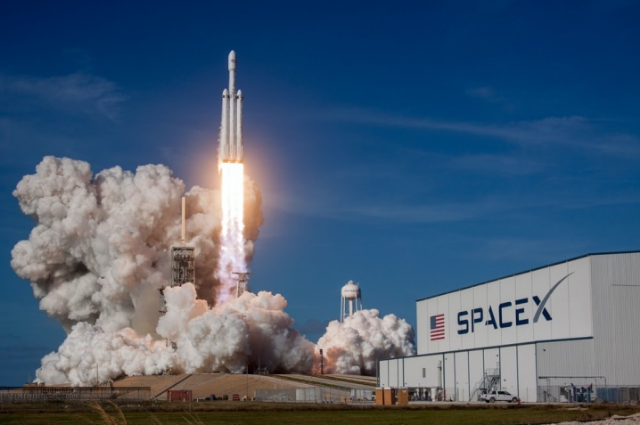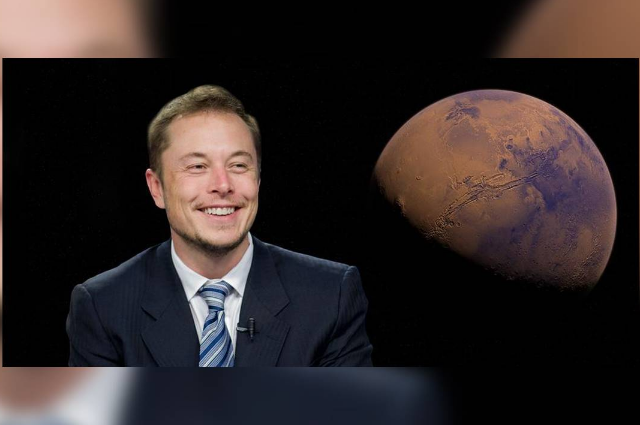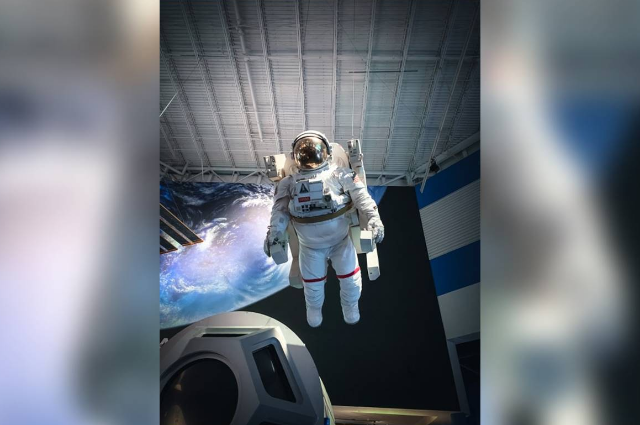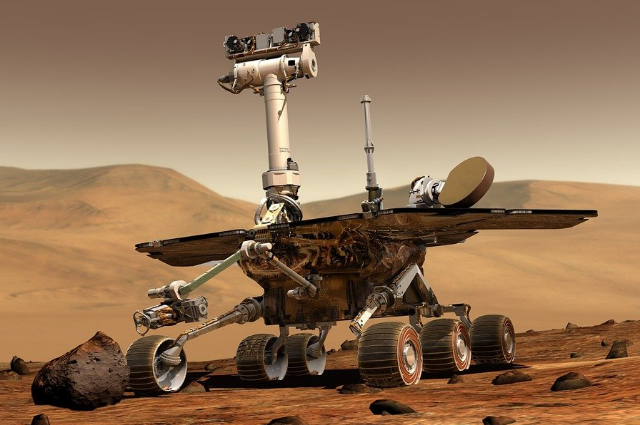Introduction
“If humanity doesn’t land on Mars in my lifetime, I would be very disappointed.” - Elon Musk
One of the solar system's eight planets, Mars has a telluric atmosphere. Scientists and astrophysicists believe that "the Red Planet" has the potential of supporting life and that it now has the highest chance of colonizing any other celestial body in the world because of its atmosphere, gravity, and other supplies. The same is no more a dream given the present initiatives and advancements.
Scientists from the early 21st century, including Stephen Hawking and Elon Musk, have grown worried about the chances of the human race surviving on Earth. The existence of the human race depends on discovering answers to several major issues that are preventing colonization efforts from being successful, including political unpredictability, biological constraints, and social problems that are challenging to resolve with present technology and organizations. The Earth is currently affected by several social and political problems, including climatic changes, which, if not handled soon, could potentially harm human life. Since the last human beings reached the Moon in 1972, the space era has changed from being only a monument to human achievement to being seen as a method of securing human survival.
Colonization at Mars plans importance
Since 1972, no human has stepped foot on an astronomical body besides Earth. Going back to the Moon — or beyond, to Mars or any other planet, particularly with real human beings — one can claim that there is no urgent need to do so. A tremendous amount of relevant science can be performed by unmanned spacecraft. Sending people would be a waste of resources, and we already have enough urgent issues to deal with. Right? Although NASA does have plans for Mars, they won't happen until the 2030s at the earliest.
There is yet another viewpoint, though. Many long-lived species have been eliminated by catastrophic catastrophes on Earth in the past, and there is a small but real possibility that Earth may be destroyed at any time by an unnoticed asteroid, comet, or nearby explosion. Failure to act amid the stresses we're placing on the biosphere or overreaction in the shape of an out-of-control synthetic biological entity might also lead to the eradication of human life from the planet. Until we leave the earth, the loss of humans could become a more or less certain possibility with enough time. In light of this, it appears that efforts to extend our species to other extra-terrestrial planets are more vital than ever.

Elon Musk officially announced intentions for his large corporation SpaceX to work toward bringing paying passengers to Mars by 2022, and it is this idea that motivates his efforts. His plan is incredibly bold, exciting, and perfectly realistic. It is driven by the idea that technological advancements in humans only occur when we decide to concentrate our efforts in science, engineering, and industry on a certain objective. Nevertheless, the initiative still has to overcome some significant obstacles. The massive glittering steel rocket exploded by landing on Tuesday, December 10, 2020, two days after SpaceX's starship launch was postponed just 1.3 seconds before liftoff. The rocket had reached an altitude of 12.5 km before flipping and bringing it back to its launch platform. Elon Musk, the founder of SpaceX, estimated that the test flight had a possibility of failing a week ago. "Mars, here we come!!" he tweeted in a burst of enthusiasm.
Expense Per Trip
Seven launches of Falcon Heavy's, costing $100 million each, can only deliver half as many colonists as the launch of a Mars Colonial Transport, which costs $2 billion. As a result, full equivalence requires fourteen launches, costing 1.4 billion dollars, and it takes seventy-four launches, costing 7.4 billion dollars, to fill a cycler. The cost of the tankers and fuel for the Cycler together add another 8.4 billion dollars to the SMCSA (SpaceX Mars Colonization System Architecture). In contrast, BAMCCC (Buzz Aldrin Mars Cycler Colonization Concept) sends 500 people into space for 15B ($30M/person) and SMCSA sends 100 people into orbit for 10B ($100M/person). Fortunately, both designs allow for launcher reuse, which lowers expenses for subsequent passengers.
The BAMCCC design has a basic cost of 50B$ and calls for three stations at 10B$ each and two bases at 10B$ each. According to SMCSA, there is only one station (on Earth), and when the colonists get there, there won't be any bases for them to dwell in (BAMCCC Bases are robotically assembled). For the initial colonists, the SMCSA design poses some risks, such as the unpredictability of the supply delivery (unless these are sent before their arrival). The colonists will also be stuck on Earth and unable to ever leave if there is no place to get the hydrogen needed to make fuel. They should be able to access the ice at levels of a meter to a few meters assuming they land close to the Great Northern Ocean's shoreline and are given shovels. They will soon discover that ice gets tougher the colder it gets. They won't be able to collect the water and split it to create fuel and oxidizer without the necessary ice extraction tool and machinery.
Reusability is what makes many transportation technologies economical, as Musk reminds out. If planes could only be used once, a journey on a contemporary commercial aircraft would cost each passenger over US$500,000, yet it now costs on the order of US$100. The same holds for Mars spacecraft, albeit the benefit is slightly constrained by the fact that an Earth-Mars rendezvous only occurs once every 26 months, which limits how frequently a craft may be employed. He contends that it will be crucial to launch the spaceship into orbit with its fuel tanks almost empty and to refuel them from a fleet of launchers that deliver fuel to space. This enables the craft to carry heavy payloads and has very huge tanks.
Financial challenges of Mission Mars
The project's financial costs are one of its main obstacles. The volume and essential equipment for colonization would be vast, even though the technology essential to reaching Mars would cost billions of dollars in and of itself. Pascal Lee estimates that over the next 25 years, the cost of sending one human to Mars might total up to $1 trillion. To make the planet habitable for colonization, various resources would be needed. For this, significant advancements in infrastructure and technology are required. For instance, a large amount of fuel would be required; this would effectively call for safety against temperature variations frequently to avoid any explosions. The survival of the colony is another significant obstacle. The process of settling is made more difficult by a lack of fundamental resources including water, oxygen, gravity, and other resources. Thus, we might conclude that the desire to enter Mars is neither simple nor economical.
Technical and Biological Barriers stopping to settle in mars
It is well known that the atmosphere on Mars is highly hostile to human survival. The oxygen concentrations on Mars are insufficient for people to survive without the aid of technology, and the speed caused by gravity is much lower than on Earth. Along with these, a frequently neglected component of living on Mars is the increased sensitivity to radiation, which would necessitate extensive protection to preserve the safety of the colonists on the land of mars. For instance, excessive radiation exposure on Mars has been linked to a higher risk of colonists acquiring cataracts in their eyes. This is made worse by the numerous challenges that the body and eyes face even throughout the lengthy journey to the planet.
For humanity to ensure its existence, these biological constraints must be addressed while colonizing another planet. Although these suggestions have frequently been regarded with doubts and hesitation because they would need some testing and experiments on the human body, some specialists have suggested that biological improvements could advance human biology and the environment to enable them to live more readily. In many cases, technological advancements can overcome these biological boundaries. The main issue, though, is determining if doing this is morally acceptable. Early colonists might be prepared to put useful technology through trial and development, but as more people travel to Mars, it would become more difficult to convince them to employ the innovations with their security.
Political barriers
The biological problems that prevent humans from living on Mars are a major obstacle, but it is also frequently forgotten that socio-political obstacles arise when a new place is colonized. According to the Outer Space Treaty, which was established in 1963, all colonies must be established peacefully, and any territory acquired on extraterrestrial planets cannot be obtained through natural colonization, occupation, or other ways of establishing sovereignty.
So, the next issue is: How will Mars' settlements be run? This treaty may need to be modified in some way to facilitate the colonization ambitions of leading nations in establishing productive colonies on Mars. The assignment of a "Mars Secretariat" to facilitate communication between the colonizing nations is another suggested approach. Due to the differing conditions on some other planets, laws would likewise need to alter from those on Earth. In addition to making sure that colonies are operating exactly as intended, various approaches are needed to share housing, food, and other facilities with a lower population than on Earth. The expense of colonizing Mars is another issue because it is much higher than any one corporation could manage.
Conclusion
It is crucial to appreciate the social and political barriers that prevent space exploration from taking place as well as the historical background of the field. This shift in setting brings to light a difference in how people all around the world view space exploration. Now recognized as a way to ensure human existence, it was originally thought to be a political matter against individuals with opposing ideas. Since the chances for success are larger than ever, initiatives to understand space have been deepened in this environment. Moving to Mars has emerged as the most practical way to maintain human life in light of the deteriorating environmental conditions on Earth and the irreparable harm that has already been done.
Of course, large journeys to Mars are dangerous, and the best way to get there is still unknown and unclear. But throughout history, this is precisely how incredible scientific, technical, or cultural achievements have been made. Sometimes, as our talents grow, something that had previously appeared unachievable becomes unexpectedly possible with the correct persistent effort. Such a revolution is what Musk wants to achieve. It might all come to nothing and be a failure. Even so, we will undoubtedly pick up a lot of new knowledge along the process.
References
- https://www.scientificamerican.com
- https://www.researchgate.net
- https://www.cnbc.com
- https://futurism.com
- https://www.zmescience.com
- https://theconversation.com
- https://www.trtworld.com
- https://dsnlu.ac.in
- https://www.npr.org
- https://scholarship.depauw.edu
- https://waitbutwhy.com
- https://tea4avcastro.tea.state.tx.us
- https://www.e-ir.info
- https://www.nature.com
- https://www.researchgate.net
- https://quotefancy.com





